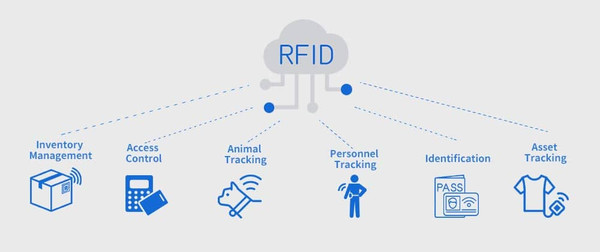
In recent years, smart homes have gained incredible popularity due to their ability to enhance convenience, comfort, and security. Among the many advanced technologies that power these futuristic homes, RFID (Radio Frequency Identification) technology stands out as a game-changer. With its ability to wirelessly detect and identify objects, RFID is revolutionizing the way we interact with our homes. In this article, we will explore the application of RFID technology in smart homes and provide examples of its practical use, showcasing how it is reshaping our living spaces.
1. Seamless Access Control:
One of the key areas where RFID technology shines is in access control systems for smart homes. Traditional key-based access systems are being replaced by RFID-enabled solutions that offer greater convenience and security. With RFID-enabled door locks and key fobs, homeowners can effortlessly unlock doors and grant access to authorized individuals. This eliminates the need for physical keys and the hassle of carrying and managing multiple keys. Additionally, RFID access control systems can provide real-time event logs, allowing homeowners to track who entered or exited their homes and at what time.
Example: Imagine coming home with your hands full of groceries. With an RFID-enabled access control system, you can simply approach the door, and it will automatically unlock as it detects the
RFID tag embedded in your key fob. No need to fumble for keys or struggle to open the door. It's a seamless and convenient experience that simplifies your daily routines.
2. Personalized Home Automation:
RFID technology also enables personalized home automation experiences tailored to individual preferences. By attaching RFID tags to personal items or wearable devices, homeowners can trigger customized automation scenarios when they come into proximity with RFID readers placed strategically throughout the home. This allows for a highly personalized and intuitive user experience, where the home can automatically adjust lighting, temperature, music playlists, and other settings based on individual preferences.
Example: Let's say you have an RFID tag embedded in your smartphone. As you walk into your living room, the
RFID reader detects your presence, and the smart home system instantly adjusts the lights to your preferred brightness, activates your favorite playlist, and sets the temperature to your desired level. It's a personalized and immersive experience that transforms your home into a tailored environment.
3. Inventory Management and Smart Appliances:
RFID technology is making significant strides in revolutionizing inventory management and enhancing the capabilities of smart appliances within smart homes. By tagging items with RFID labels, homeowners can effortlessly track and manage their belongings. Smart refrigerators equipped with RFID readers can detect the contents of the fridge, monitor expiration dates, and generate shopping lists automatically. RFID-enabled laundry machines can identify clothing items and adjust the wash cycle accordingly, ensuring optimal care for each garment.
Example: Imagine opening your refrigerator and seeing an inventory list on a display screen, showing you what items are inside and their expiration dates. Based on this information, the smart refrigerator can generate a shopping list on your smartphone and notify you when certain items are running low. It takes the guesswork out of managing your groceries and ensures you never run out of essential items.
4. Elderly and Child Care:
RFID technology has significant potential in enhancing the safety and well-being of vulnerable individuals, such as the elderly or children, within smart homes. By using RFID-enabled bracelets or pendants, caregivers can monitor the location and movements of their loved ones. If a child or elderly person strays outside a predefined safe zone, an alert can be triggered to notify the caregiver. This helps ensure their safety and provides peace of mind.
Example: Suppose you have an elderly family member with a tendency to wander outside the house unsupervised. By equipping them with an RFID-enabled bracelet, you can receive instant alerts and track their location on your smartphone or computer. This allows you to ensure their safety and respond promptly if they wander too far from home.
In conclusion, RFID technology is transforming the landscape of smart homes, enhancing security, convenience, and personalization. Its applications in access control, personalized automation, inventory management, and elderly/child care showcase its versatility and potential. As this technology continues to evolve, we can expect even more innovative use cases that revolutionize the way we interact with our homes. With RFID-enabled smart homes, we can enjoy a new level of comfort, efficiency, and peace of mind in the increasingly connected world we live in.
 Call at :
+86 18681515767
Call at :
+86 18681515767
 Email :
marketing@jtspeedwork.com
Email :
marketing@jtspeedwork.com
 Call at :
+86 18681515767
Call at :
+86 18681515767
 Email :
marketing@jtspeedwork.com
Email :
marketing@jtspeedwork.com

